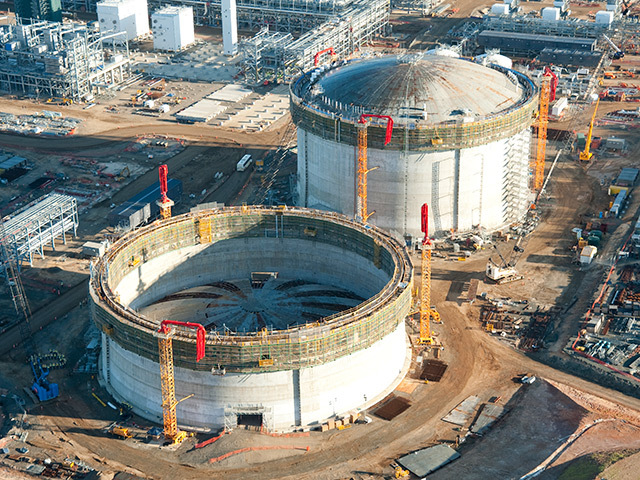
Ratings agency Standard & Poor’s says it does not expect any material improvement in conditions or spot prices in the liquefied natural gas market in coming years.
The implications of today’s lower oil and LNG prices for its rated companies and projects are negative with LNG prices falling more than 75% over the past two years amid a global supply glut.
In its latest report S&P forecasts global supply to increase by nearly 40% between 2015 and 2020, based on projects already under construction.
The value of Australian exports of LNG could eclipse exports of iron ore in the next few years, depending on commodity prices, totalling about 85 million tonnes per annum (mtpa), more than the 78 mtpa of liquefaction capacity in Qatar, currently the largest country exporter of LNG.
Exports of LNG from the US have just started from Sabine Pass. This is first of five export terminals that could ramp up to capacity of 70 mtpa or more by 2020.
Over recent decades, the global LNG business has been a millpond compared with the cascades of other commodities S&P said, reflecting LNG’s relative stability thanks to typically long-term contractual nature of supply contracts.
However, long-term supply contracts often have pricing formulas with a link to oil prices, often averaged over time or with a lag.
“We see the broader LNG market a bit like the proverbial oil – or LNG – tanker, slow to change direction,” said S&P credit analyst Simon Redmond.
“Given the volume of new supply, mostly contracted but also uncontracted, it would take a material event to shift market expectations in 2016.”
“We recently affirmed our ‘A’ ratings on two RasGas projects in Qatar, but for the first time in 10 years we revised the outlook to negative, implying a one-in-three chance the ratings could be downgraded in the next year or two.”
An oil price rebound driven by stronger economic growth and demand from China and elsewhere, could reset the actual and perceived supply demand balance for LNG, Redmond said, but this remains a theoretical scenario.
Recommended for you
